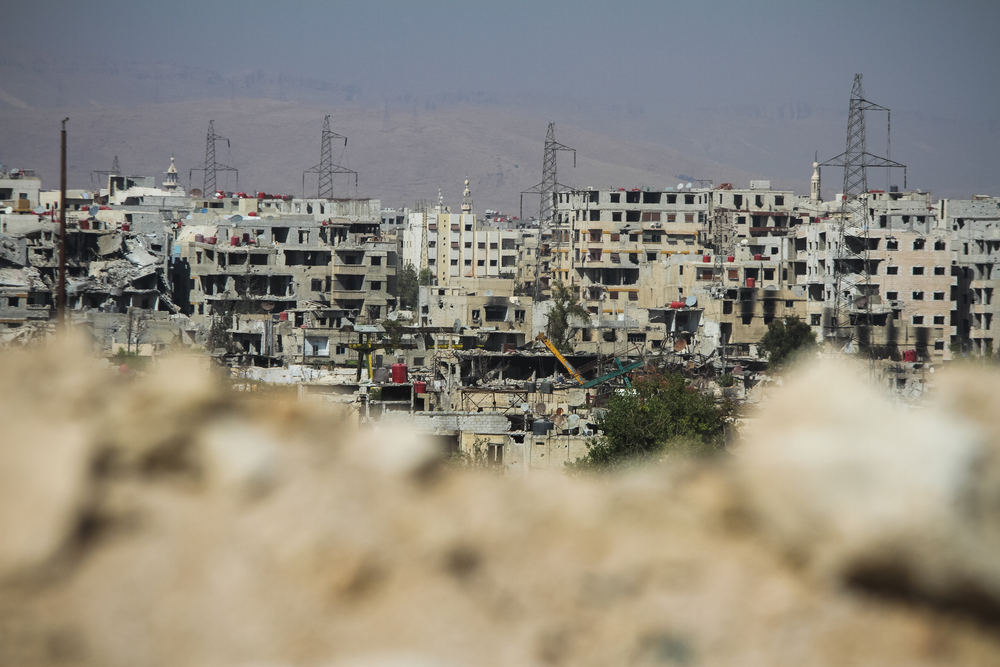Changing climate contributed to Syrian conflict, will increasingly hurt Mideast economies-studies
Photo: Damascus, Syria, September, 2013 / Volodymyr Borodin / Shutterstock.com
A growing body of evidence suggests that climate change helped spark the ongoing conflict in Syria–and that if left unchecked, it will continue to wreak havoc on the societies and economies of the Middle East.
SYRIA CONFLICT
“The Syria case is a good example of a type of scenario that could become more common as temperatures warm: Hot temperatures and low rainfall for many years drastically reduced agricultural output in the Syrian countryside,” explains Marshall Burke, a fellow at Stanford University’s Center on Food Security and the Environment.
“This brought a lot of people into the cities, and the government’s poor management of this influx could have contributed to the civil war and ensuing catastrophe that has been witnessed there.”
The severe and persistent drought that preceded the uprising in Syria was “likely made worse by human-induced climate change,” according to a study published early this year in the Proceedings of the National Academy of Sciences that examined long-term precipitation and temperature trends and compared them with climate model results.
PNAS researchers concluded that the movement to Syrian cities of an estimated 1.5 million people internally displaced by the drought, combined with an influx of nearly as many refugees from Iraq, was “neglected by the Assad government and became the heart of the developing unrest.”
Dr. Bruce Campbell, director of the Copenhagen-based Consortium of International Agricultural Research (CGIAR) Program on Climate Change, Agriculture and Food Security, echoes Burke’s concerns.
“Droughts have been with the Middle East through the ages, but with Syria, the length and severity has been two to three more than normal,” Campbell says. “This hits rural economies, as people can’t make it based on their traditional livelihoods, and results in a lot of internal migration to towns. So you get these swelling urban populations without jobs, without infrastructure, which creates upheavals.”
'DETRIMENTAL' TO ECONOMIES
Research that Burke recently co-authored on the “Global non-linear effect of temperature on economic production” foresees an average drop in global incomes of roughly 23 percent by the year 2100 due to climate change–and much sharper declines in GDP per capita for many of the world’s regions, including the Middle East.
“Because countries in this region are already pretty hot, our findings suggest that further warming could be pretty detrimental to their economies,” says Burke. The researchers’ study, published in the science journal Nature in November, projects GDP losses greater than 50 percent by the end of the century in most Middle Eastern countries, including Iran (-58%), Jordan (-72%), Syria (-72%), Egypt (-84%), Yemen (-88%), Iraq (-93%), Oman (-94%), the UAE (-94%) and Saudi Arabia (-96%).
While a deal at the December climate summit in Paris to limit emissions “would certainly help,” says Burke, “countries will also need to figure out how to adapt–and to be honest, there's not a lot of great evidence on what successful adaptation to extreme temperatures looks like.”
SOLUTIONS
Some steps are being taken, however, to help people and economies cope, creating limited new areas of economic growth as a result.
“What we’ve been seeing in some places is that index-based insurance, which pays off when a particular weather variable goes below a certain indicator, has taken off,” says Campbell. “The other growth area is ICT [information and communication technology], getting information to farmers so they can deal with weather extremes.”
Community-based radio, mobile-phone alerts and even reality-TV shows are already being used in Africa to get information to farmers about ways to adjust to changing conditions, says Campbell: “Since droughts are getting worse, it’s crucial to develop drought-resilient farming systems.”
Other solutions are being provided by the Amman-based International Center for Agricultural Research in the Dry Area (ICARDA), which maintains a gene bank of different traditional varieties of wheat. This bank can be searched for wheat varieties that are drought resistant, which are then used to develop new varieties that share that characteristic, Campbell explains.
“ICARDA-origin varieties of bread wheat now cover more than 200,000 hectares annually in rain-fed environments of Iran, and in the last five years, more than 20 drought-tolerant wheat varieties of ICARDA origin have been released throughout the Middle East,” Campbell says. “These kinds of innovations have to be combined with insurance, seasonal forecasts and other such innovations so the risks of farmers are reduced and they are thus more willing to invest in new technologies.”
© Copyright SalaamGateway.com 2015
